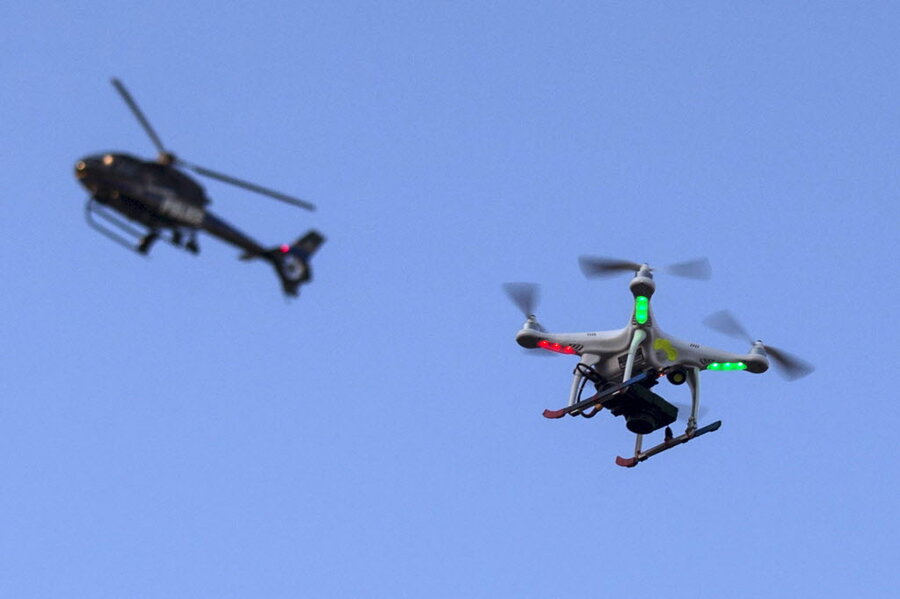Why the US military is designing disposable drones
Loading...
US military scientists at the Naval Research Laboratory have created a drone that can locate enemy submarines, detect tornadoes, and record conversations – all while being small enough to fit in your hand.
Named after the cicada – an insect that spends years underground before reappearing suddenly in great numbers to reproduce and then die – these drones are meant to work in swarms.
"The idea was why can't we make UAVs (unmanned aerial vehicles) that have the same sort of profile," Aaron Kahn a flight controls engineer at the Naval Research Laboratory, told AFP. "We will put so many out there, it will be impossible for the enemy to pick them all up."
The design of the Cicada, short for Covert Autonomous Disposable Aircraft, is simple. With only about 10 individual parts and no motor, it is programmed to glide to a specific set of GPS coordinates after being dropped from an aircraft or a larger drone.
The Cicada has the advantage of being quieter than most drones, since it has no engine or propulsion system and although it does not fly, it hits its target a high level of accuracy. In a test conducted three years ago, Cicada drones were dropped from 57,600 feet and still landed within 15 feet of its target.
Its simplicity also makes it inexpensive to build. Prototypes cost just $1,000 to build, and Khan believes the cost could drop as low as $250.
In flight tests, the Cicada has been equipped with sensors that send back weather readings for temperature, air pressure and humidity, but its designers intend for it to have military applications as well, including sensing enemy submarines or eavesdropping on enemies.
"You equip these with a microphone or a seismic detector, drop them on that road, and it will tell you 'I heard a truck or a car travel along that road.' You know how fast and which direction they're traveling," Kahn said.
While many a hobbyist has attached their GoPro to their personal drone, the Cicada will, for now, not be equipped with a video camera. These drones are designed with the understanding that they will not necessarily be recovered, and retrieving video from a drone remotely requires too much bandwidth, according to researchers.
Despite their size, these drones can handle a lot of wear and tear.
"They've flown through trees. They've hit asphalt runways. They have tumbled in gravel. They've had sand in them,” Daniel Edwards, an aerospace engineer at the Naval Research Laboratory, told AFP. “They only thing that we found that killed them was desert shrubbery.”
Until the Cicada drones are ready for deployment in military operations, they may be used to aid meteorologists in collecting the temperature readings used to predict tornadoes. Unlike the current sensors, which are confined to the ground, the Cicada can take temperature readings from the air and provide more accurate data.








